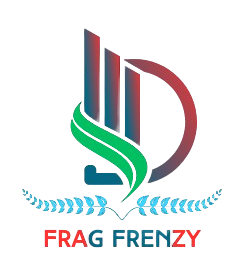Over-the-top (OTT) marketing has emerged as a transformative strategy in the digital marketing landscape, leveraging the proliferation of internet-enabled devices and high-speed connectivity to reach audiences directly, bypassing traditional distribution channels. This form of marketing has revolutionized how brands communicate with consumers, offering personalized, engaging, and interactive content that can be accessed anytime, anywhere.
The Evolution of OTT Marketing
The concept of OTT initially referred to the delivery of television and film content via the internet without the need for traditional cable or satellite television services. Platforms like Netflix, Hulu, and Amazon Prime Video epitomize this shift, providing consumers with on-demand, subscription-based access to a vast library of content. This model quickly expanded beyond entertainment to encompass a broad spectrum of digital ott vendor media, including music, news, and even live sports.
As the OTT ecosystem grew, marketers recognized the potential of these platforms to deliver targeted advertising and branded content. OTT marketing leverages the extensive data analytics capabilities of digital platforms to create highly personalized marketing campaigns. This shift allows brands to move beyond one-size-fits-all advertising, instead offering tailored experiences that resonate with individual users based on their viewing habits, preferences, and behaviors.
Key Components of OTT Marketing
Personalization: One of the most significant advantages of OTT marketing is its ability to deliver personalized content. By analyzing user data, marketers can create ads and branded content that align closely with the interests and behaviors of specific audience segments. This personalization enhances the relevance and impact of marketing messages, driving higher engagement and conversion rates.
Interactive Content: OTT platforms provide an interactive environment that traditional media lacks. Features like clickable ads, interactive videos, and in-app purchases enable users to engage directly with the content. This interactivity not only makes marketing more engaging but also provides valuable feedback and insights into consumer behavior.
Cross-Platform Reach: OTT content is accessible across various devices, including smartphones, tablets, smart TVs, and gaming consoles. This cross-platform availability ensures that brands can reach consumers wherever they are, maintaining a consistent presence across different touchpoints in their daily lives.
Data-Driven Insights: OTT platforms offer robust analytics tools that allow marketers to track the performance of their campaigns in real-time. Metrics such as viewership data, click-through rates, and conversion rates provide actionable insights that can be used to refine and optimize marketing strategies continually.
Benefits and Challenges
Benefits:
- Enhanced Engagement: OTT marketing’s personalized and interactive nature leads to higher consumer engagement. Viewers are more likely to interact with content that speaks directly to their interests.
- Greater Reach: With the widespread adoption of internet-enabled devices, OTT marketing can reach a global audience without the limitations of geographical boundaries.
- Cost-Effectiveness: Digital distribution can be more cost-effective than traditional media buys, allowing for more efficient allocation of marketing budgets.
Challenges:
- Ad Fatigue: The abundance of content and advertising on OTT platforms can lead to ad fatigue among users. Marketers need to balance the frequency and relevance of their ads to avoid alienating their audience.
- Privacy Concerns: The reliance on data for personalization raises concerns about user privacy and data security. Marketers must navigate these issues carefully to maintain consumer trust.
- Fragmentation: The OTT landscape is highly fragmented, with numerous platforms competing for viewer attention. This fragmentation can make it challenging for marketers to reach their target audience effectively across different services.
Conclusion
Over-the-top marketing represents a dynamic and innovative approach to digital advertising, capitalizing on the growing consumption of internet-based media. By delivering personalized, interactive, and data-driven content, OTT marketing offers significant opportunities for brands to engage with consumers in meaningful ways. However, to fully harness its potential, marketers must address challenges related to ad fatigue, privacy, and platform fragmentation, ensuring that their strategies are both effective and respectful of consumer preferences. As the digital landscape continues to evolve, OTT marketing is poised to play an increasingly central role in shaping the future of consumer engagement.
